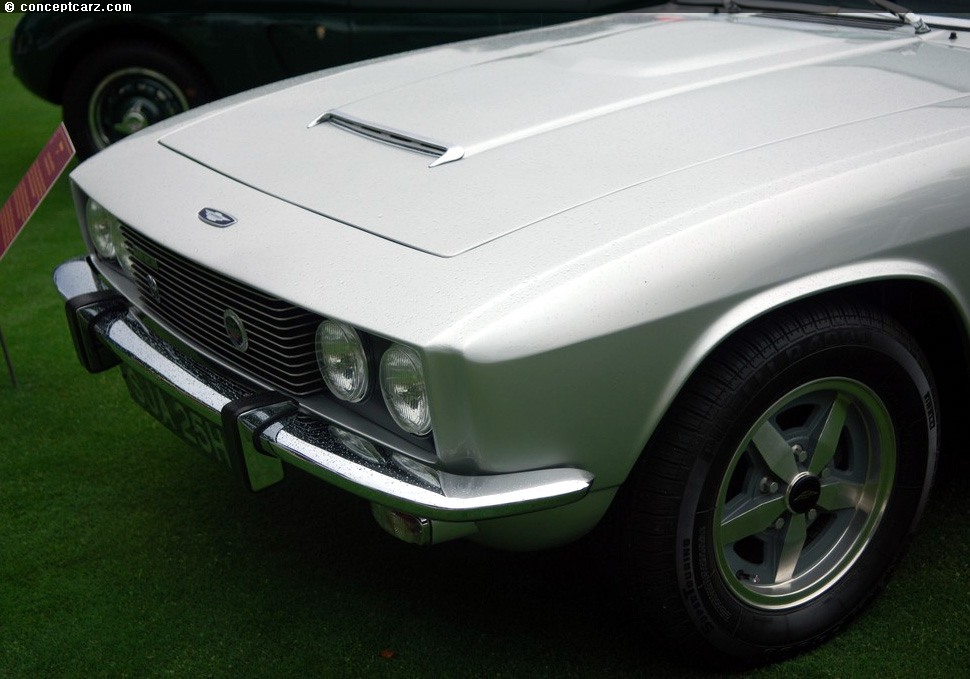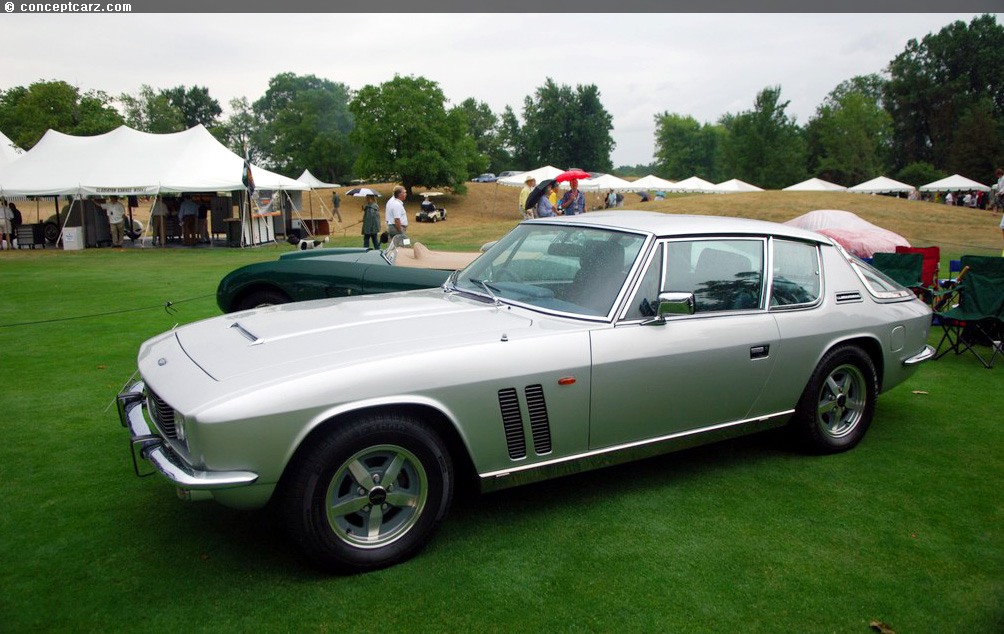Jensen was founded by two brothers, Alan and Richard Jensen (born in 1906 and 1909, respectively), who became interested in cars at an early age, and so in 1930, their father set them up in their first business, Patrick Jensen Motors, based at Edgbaston. They operated the business with Joe Patrick, but moved on the following year after a disagreement. In 1931, they worked at W.J. Smith & Sons, an old established firm of motor body builders, located in High Street, Carters Green, West Bromwich. Their specialty was with cars and lorries. After William Smith passed away, the brothers took over the business, and in 1934 it became Jensen Motors Limited.
Saloon
View info and historyJensen Motors Limited specialized in custom-built bodies for a range of readily available car chassis made by several manufacturers, including Morris, Singer, Standard, and Wolseley. In 1934, the company received a commission from American actor Clark Gable to build a special car atop a Ford V8 chassis. The well-received automobile generated much interest in their work, including a relationship with Ford to produce a line of Jensen-Fords (a Ford chassis and running gear with Jensen coachwork). In 1934, they created a design for their first true production car under the name White Lady, which evolved into the Jensen S-Type of 1935 and continued until the outbreak of World War II. Built as a saloon and a convertible, it was the firm's first volume production car, based on Ford motors from the United States, and chassis parts from Ford of Britain sourced through M B K Motors. It had a steel chassis, and aluminum body panels, and was powered by either a 2,227 cc or a 3,622 cc, Ford Sidevalve V8 engine, equipped with two downdraft carburetors, Vertex ignition, and a Columbia overdrive rear axle.Commercial Vehicle Production
The company diversified into commercial vehicle production during the late 1930s under the marque JNSN. During World War II, they produced military vehicles and components, including fire engines, ambulances, and turrets for tanks. After the war, they returned to civilian vehicle production with a range of lightweight diesel trucks, buses, and coaches.Post World War II
When peacetime resumed, Jensen returned to automobile production with a luxury saloon dubbed the PW (for Post War). It was built from 1946 through 1952 and fewer than twenty examples were built. The saloon was powered by a Meadows 3,993cc straight-eight engine initially, but later replaced with Nash's straight eights and then to an Austin Sheerline 3,993cc straight-six.
Saloon
View info and historyBody designer Eric Neale joined Jensen Motors from Wolseley in 1946 and his first project was the Interceptor, built from 1950 to 1957. Based on readily available Austin components, the 3,993cc straight-six was the same previously used on the PW. Jensen would later reuse the 'Interceptor' name in 1966 for a grand touring car that was hand-built at the Kelvin Way Factory in West Bromwich, near Birmingham in England. A total of 6,408 examples of this 'second generation' Interceptor were built by the time production ceased in 1976. The Jensen 541 was built from 1954 to 1959 with 226 examples built. Designed by Eric Neale, it used fiberglass bodywork mounted on a steel chassis and powered by a straight-six engine paired with a four-speed transmission with optional Laycock de Normanville overdrive. The 541 Deluxe version, introduced in 1956, featured four-wheel Dunlop disc brakes replacing the previous servo-assisted 11-inch drums.The Jensen FF
The Jensen FF - standing for Ferguson Formula (after Ferguson Research Ltd.) - was based on the Interceptor. Introduced in 1966 (the same year as the 2nd Gen Interceptor), a mere 320 (as many as 330) examples were built by the time production ended in 1971. It wore an Italian-styled body, hand-built British chassis and coachwork, a 325 horsepower American V8 engine, and a Formula 1-derived all-wheel-drive system. It had a similar appearance to the rear-wheel drive Jensen INcerceptor, but its overall length was five inches longer, and the mechanical specification was very different.
Saloon
View info and historyThe Jensen FF rested on a 109-inch wheelbase, had an overall length of 191 inches, was 55 inches tall, and was 69 inches wide. The front-engine, four-wheel drive, two-door, four-seater coupe was powered by a 6,277cc (Chrysler 383 CID) V8 engine paired with a three-speed TorqueFlite A727 automatic transmission. The Dunlop Maxaret mechanical anti-lock braking system was previously tested on Jensen C-V8 experimental cars, but not on production versions. The Ferguson Research full-time AWD was a production sports car first. Federico Formenti at Italian coachbuilder Carrozzeria Touring designed a new Jensen Interceptor during the early 1960s, with the bodies initially built by Vignale beginning in 1966, before Jensen took production in house, making some subtle body modifications. Available as a fastback, convertible, or coupe, the popular fastback featured a large, wrap-around rear glass hinged for easy access. Styling between the Interceptor and FF were similar, distinguished by different fenders and grillework. Standard amenities bestowed upon the FF included map pockets, a tachometer, and front seat belts. 
Saloon
View info and historyJensen pioneered many advanced technologies with the FF, many of which were used by mainstream luxury car companies during the 1980s and 1990s. The use of four-wheel drive in a passenger car preceded the Subaru Leone by five years, the AMC Eagle by over a dozen years, and the Audi Quattro by fourteen years.The Jensen FF was a technological success, a Paragon of ingenuity, and a competent Grand Tourer. It failed, however, commercially due to its high price, costing approximately 30% above the price of the similarly styled Interceptor. Due to the complexity of the mechanical configuration, the FF was solely built in right-hand drive. The brake servo and steering gear were on the right-hand side, and the central transfer case and both propeller shafts protruded into the left-hand seat space. Thus, the car's primary market was overseas where cars were driven on the right-hand side of the road.
by Daniel Vaughan | Jun 2023

Saloon
View info and history
The company diversified into commercial vehicle production during the late 1930s under the marque JNSN. During World War II, they produced military vehicles and components, including fire engines, ambulances, and turrets for tanks. After the war, they returned to civilian vehicle production with a range of lightweight diesel trucks, buses, and coaches.Post World War II
When peacetime resumed, Jensen returned to automobile production with a luxury saloon dubbed the PW (for Post War). It was built from 1946 through 1952 and fewer than twenty examples were built. The saloon was powered by a Meadows 3,993cc straight-eight engine initially, but later replaced with Nash's straight eights and then to an Austin Sheerline 3,993cc straight-six.

Saloon
View info and history
The Jensen FF - standing for Ferguson Formula (after Ferguson Research Ltd.) - was based on the Interceptor. Introduced in 1966 (the same year as the 2nd Gen Interceptor), a mere 320 (as many as 330) examples were built by the time production ended in 1971. It wore an Italian-styled body, hand-built British chassis and coachwork, a 325 horsepower American V8 engine, and a Formula 1-derived all-wheel-drive system. It had a similar appearance to the rear-wheel drive Jensen INcerceptor, but its overall length was five inches longer, and the mechanical specification was very different.

Saloon
View info and history

Saloon
View info and history
by Daniel Vaughan | Jun 2023
Related Reading : Jensen FF History
The Jensen FF was produced from 1966 through 1971, with a total of 320 examples being produced. It was an impressive vehicle that had the technology to match. It was given a four-wheel-drive system and an anti-lock Dunlop Maxaret electro-mechanical braking system. The cars rested on a wheelbase that measured 109 inches and had a length of 191 inches. The V8 engine measured 383 cubic inches and produced....
Continue Reading >>
Continue Reading >>
Similar Vehicles
1966 Jensen FF Vehicle Profiles
Recent Vehicle Additions
Performance and Specification Comparison
FF Specification Comparison by Year
Year
Production
Wheelbase
Engine
Prices
Related Automotive News

Boxing Champion Canelo Alvarez's 2018 Bugatti Chiron Among Sought-After European Supercars Crossing Barrett-Jackson Scottsdale Fall Auction Block
Barrett-Jackson, The Worlds Greatest Collector Car Auctions, will roll out some of the worlds most desirable European supercars and exotic collectible vehicles across the block during the 2024 Scottsdale Fall Auction, presented by Gila...

2015 PANOZ 25TH ANNIVERSARY EDITION ESPERANTE SPYDER ON DISPLAY AT GORDON MCCALL'S MOTORWORKS REVIVAL
All-new high-performance, limited-edition Panoz25th Anniversary Edition Esperante sports car makes its West Coast debut at Monterey Car Weeks kick-off event
August 7, 2014, Hoschton, Ga. – The excitement is building for the annual automotive...

FIRST 25TH ANNIVERSARY PANOZ ESPERANTE SPYDER DEBUTS AT STANDING-ROOM ONLY CELEBRATION
Panoz LLC also officially dedicates its new 10,000-sq.-ft. exhibition featuring interactive displays showcasing the storied Panoz sports car and racing history
Hoschton, Ga., April 04, 2014–Hundreds of Panoz fans, followers and owners...

Mercedes-Benz Pays Homage to a Regional Classic at the 2013 Greenwich Concours d'Elegance
The all-new 2014 E-Class Wagon Debuts Alongside a 1957 300c
Mercedes-Benz USA debuts the all-new 2014 E-Class Wagon alongside one of its predecessors, a pristine 1957 300c at the 18th Annual Greenwich Concours dElegance from June 1-2, 2013....

Land Rover Celebrates 65 Years
- April 30th 2013 marks the 65th anniversary of Land Rover
- Celebratory event showcases 65 years of Land Rover innovation
- Around 150 heritage vehicles attend celebratory event at Packington Estate in the United Kingdom, the original testing ground...






















